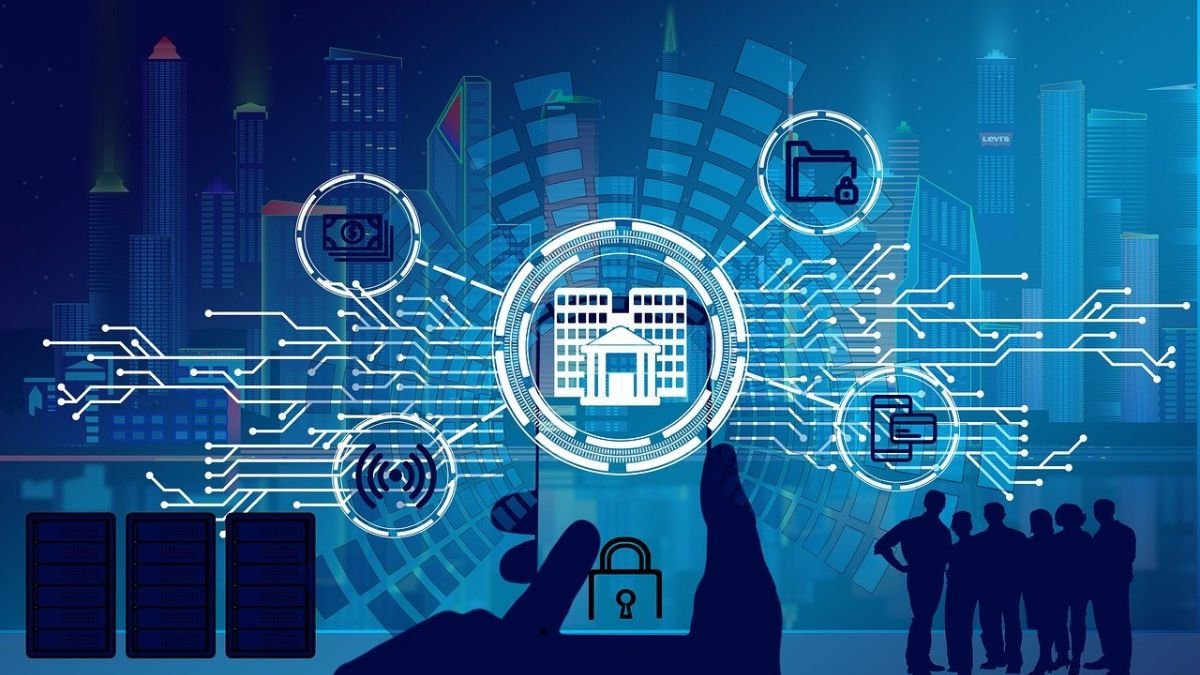Blockchain is the underlying technology that powers cryptocurrencies like Bitcoin and Ethereum. It’s essentially a distributed ledger, maintained by a network of computers, that records transactions securely and transparently.
Decentralized Finance, or DeFi, refers to a system of financial applications built on blockchain technology, designed to provide financial services like lending, borrowing, trading, and investing without intermediaries, such as banks.
Blockchain technology was first introduced with the advent of Bitcoin in 2009 by an anonymous entity known as Satoshi Nakamoto. It was initially designed as a peer-to-peer digital currency, free from the control of centralized authorities.
The Growth of Cryptocurrencies
| Over time, blockchain technology evolved beyond just cryptocurrencies. Ethereum, introduced in 2015, added a new dimension by enabling smart contracts, which led to the creation of decentralized applications (dApps) and the rise of the DeFi ecosystem. |
How Blockchain Powers DeFi
Blockchain as the Backbone of DeFi
| Blockchain serves as the foundation for DeFi applications. Since all transactions are recorded on the blockchain, they are immutable and verifiable, ensuring transparency. This decentralized nature eliminates the need for a central authority, empowering users with more control over their assets. |
Smart Contracts: The Core of DeFi
They automatically enforce and execute agreements when predefined conditions are met, which is the key feature enabling decentralized lending, borrowing, and trading.
Key Components of Decentralized Finance
Cryptocurrencies
Cryptocurrencies like Bitcoin, Ethereum, and various stablecoins serve as the primary medium of exchange in DeFi applications. These digital assets enable borderless transactions and serve as collateral for loans and other financial products.
Smart Contracts
Smart contracts are the core building blocks of DeFi applications. They allow for the automation of various financial processes, such as lending, staking, and yield farming, without requiring intermediaries.
Decentralized Applications (dApps)
In DeFi, dApps provide a wide range of financial services that mimic traditional financial products but with greater transparency and without intermediaries.
Advantages of Decentralized Finance
Transparency and Trust
DeFi transactions are transparent and can be verified on the blockchain by anyone. This creates an open financial system where users don’t have to rely on institutions for trust.
Accessibility and Financial Inclusion
One of the biggest advantages of DeFi is its ability to offer financial services to anyone with an internet connection. This can be especially beneficial for people in regions where traditional banking infrastructure is lacking.
Reducing the Need for Middlemen
DeFi eliminates intermediaries like banks, brokers, and other middlemen, allowing for faster, more efficient transactions and reduced fees.
Defi Use Cases
Lending and Borrowing Platforms
In DeFi, users can lend their cryptocurrencies to earn interest or borrow assets by providing collateral.
Decentralized Exchanges (DEXs)
Decentralized exchanges, like
- Uniswap
- SushiSwap
allow users to trade cryptocurrencies directly with each other without the need for a centralized exchange.
Stablecoins
- They are crucial in DeFi for providing stability and reducing volatility
The Role of Smart Contracts in DeFi
What are Smart Contracts?
Smart contracts are code-based agreements that automatically execute actions when certain conditions are met. For example, a smart contract in a DeFi platform could automatically transfer funds when a loan is repaid.
How Smart Contracts Automate DeFi
Smart contracts enable automation in DeFi by eliminating manual processing and human intervention. This allows for instant transactions, reducing delays and errors.
Popular DeFi Protocols
Uniswap
Uniswap is a decentralized exchange that uses smart contracts to enable users to trade cryptocurrencies without relying on a traditional exchange.
Compound
Compound is a lending and borrowing protocol that allows users to earn interest by supplying assets to a liquidity pool, or borrow assets by collateralizing their holdings.
Aave
Aave is another lending and borrowing protocol known for its flash loans, which allow users to borrow assets without collateral, as long as the loan is repaid within the same transaction.
Challenges Facing DeFi
Security Risks
DeFi platforms are not immune to hacks and vulnerabilities. Smart contract bugs or malicious attacks can lead to loss of funds.
Regulatory Concerns
The decentralized nature of DeFi raises questions about how governments can regulate these platforms. Uncertainty in regulation can affect the adoption and growth of DeFi.
Scalability Issues
Most DeFi platforms are built on Ethereum, which can become congested, leading to high transaction fees and slow processing times. Scalability solutions like Ethereum 2.0 are being developed to address this.
Blockchain Security and DeFi Risks
The Importance of Security in Blockchain
Blockchain security is crucial for ensuring the integrity of the DeFi ecosystem. Secure blockchains prevent unauthorized transactions and tampering with records.
Common DeFi Security Vulnerabilities
Common vulnerabilities include smart contract bugs, flash loan attacks, and rug pulls, where developers abandon a project after securing users’ funds.
Defi vs. Traditional Finance
| Key Differences |
| DeFi, on the other hand, is completely decentralized, with users directly interacting through blockchain technology. |
DeFi, on the other hand, is completely decentralized, with users directly interacting through blockchain technology.
How Defi is Disrupting Traditional Banking
DeFi offers a more inclusive and accessible alternative to traditional banking, cutting down on processing times, fees, and barriers to entry.
What are the Trends in DeFi
DeFi is continuously evolving, with trends like yield farming, liquidity mining, and governance tokens shaping its future.
What is The Potential for Mass Adoption
While DeFi is still in its early stages, its potential for mass adoption is vast. As blockchain technology matures and scalability issues are addressed, more people may turn to DeFi for their financial needs.

1 thought on “Blockchain and Decentralized Finance in 2024”